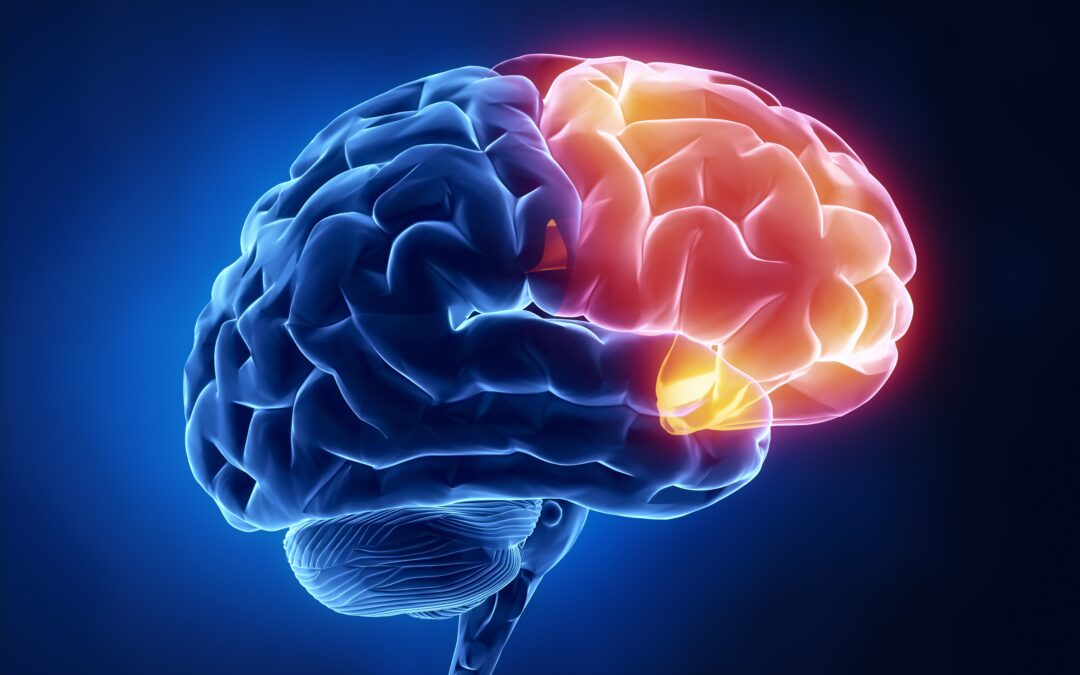Working memory is a higher cognitive construct with limited capacity responsible for maintaining and processing relevant information required in everyday activities proceeded in a goal-directed fashion (Baddeley & Hitch, 1974; Baddeley, 2012; Baddeley et al., 2021). For instance, working memory is involved when someone is asked to recall the last two instruction points for the second stage of an activity such as a game. In this scenario, information is retrieved from long-term memory and processed in working memory to perform the task.
Relationship with Other Cognitive Constructs
Results from earlier studies demonstrate strong and consistent associations between working memory measures and other higher-order cognitive constructs. These include reasoning (Kane & Engle, 2002), fluid intelligence (Chuderski, 2013; Oberauer et al., 2005), and attention (Unsworth et al., 2014). These constructs play a crucial role in learning outcomes and everyday life abilities such as reading comprehension, math, and problem-solving (Shah & Miyake, 1999; Diamond & Ling, 2020).
Working Memory and Executive Functions
It is well established from various studies that working memory capacity measures strongly correlate (r = .97) with executive functions (EFs) (McCabe et al., 2010). Executive functions are a set of high-level control processes required by individuals to successfully thrive in the real world. The family of executive functions includes abilities such as updating, inhibitory control, and cognitive flexibility (set shifting) (Stievano & Valeri, 2013; Diamond, 2015; Friedman & Miyake, 2018).
Impact on Self-Regulation and Goal-Directed Behavior
Executive functions are responsible for an individual’s self-regulation in goal-directed behavior due to their influence on low-level processes (Friedman & Miyake, 2018). They impact each aspect of human existence, from social behavior to academic achievements (Diamond, 2015). However, EFs are fragile and prone to external environmental influences. Impairment to any of the EF abilities can significantly impact an individual’s quality of life.
Working Memory and Intelligence
Research has shown that working memory and fluid intelligence share a substantial amount of their latent variance, ranging from 50% to 85% (Kane et al., 2005; Oberauer et al., 2005). This strong relationship implies that working memory is closely associated with critical thinking, which involves the ability to solve complex problems through mental operations such as identifying relationships and drawing inferences (Dwyer et al., 2014; Ennis, 2018).
Role in Critical Thinking
Empirical research has indicated that working memory plays an important role in various aspects of critical thinking ability, such as deductive reasoning and the inhibition of thinking biases. For example, Noone et al. (2016) found that working memory, measured by tone monitoring and letter-memory tasks, predicted critical thinking ability, including argument analysis, verbal reasoning, and hypothesis testing skills.
Developmental Perspective
From a developmental standpoint, post-error slowing (PES) in executive function tasks has been observed in children as young as 3-4 years of age (Jones et al., 2003). PES appears to be coarser in younger children and becomes fine-tuned with increasing age and experience (Brewer & Smith, 1989; Dubravac et al., 2021; Roebers, 2022). This developmental trajectory suggests that the relationship between working memory, executive functions, and higher-order cognitive processes continues to evolve throughout childhood and adolescence.
References
Baddeley, A. (2012). Working memory: Theories, models, and controversies. Annual Review of Psychology, 63, 1-29. https://doi.org/10.1146/annurev-psych-120710-100422
Baddeley, A. D., & Hitch, G. (1974). Working memory. In G. H. Bower (Ed.), The psychology of learning and motivation: Advances in research and theory (Vol. 8, pp. 47-89). Academic Press.
Baddeley, A., Finch, J. P., & Allen, R. J. (2021). Working memory: The state of the science. Annual Review of Psychology, 72, 1-25. https://doi.org/10.1146/annurev-psych-010419-051352
Brewer, N., & Smith, G. A. (1989). Developmental changes in processing speed: Influence of speed-accuracy regulation. Journal of Experimental Psychology: General, 118(3), 298-310. https://doi.org/10.1037/0096-3445.118.3.298
Chuderski, A. (2013). When are fluid intelligence and working memory isomorphic and when are they not? Intelligence, 41(4), 244-262. https://doi.org/10.1016/j.intell.2013.04.003
Diamond, A. (2015). Effects of physical exercise on executive functions: Going beyond simply moving to moving with thought. Annals of Sports Medicine and Research, 2(1), 1011.
Diamond, A., & Ling, D. S. (2020). Review of the evidence on, and fundamental questions about, efforts to improve executive functions, including working memory. In J. M. Novick, M. F. Bunting, M. R. Dougherty, & R. W. Engle (Eds.), Cognitive and working memory training: Perspectives from psychology, neuroscience, and human development (pp. 143-431). Oxford University Press.
Dubravac, M., Roebers, C. M., & Meier, B. (2021). Age differences in post-error slowing across tasks with varying cognitive demands. Developmental Psychology, 57(8), 1284-1298. https://doi.org/10.1037/dev0001213
Dwyer, C. P., Hogan, M. J., & Stewart, I. (2014). An integrated critical thinking framework for the 21st century. Thinking Skills and Creativity, 12, 43-52. https://doi.org/10.1016/j.tsc.2013.12.004
Ennis, R. H. (2018). Critical thinking across the curriculum: A vision. Topoi, 37(1), 165-184. https://doi.org/10.1007/s11245-016-9401-4
Friedman, N. P., & Miyake, A. (2018). Unity and diversity of executive functions: Individual differences as a window on cognitive structure. Cortex, 86, 186-204. https://doi.org/10.1016/j.cortex.2016.04.023
Jones, L. B., Rothbart, M. K., & Posner, M. I. (2003). Development of executive attention in preschool children. Developmental Science, 6(5), 498-504. https://doi.org/10.1111/1467-7687.00307
Kane, M. J., & Engle, R. W. (2002). The role of prefrontal cortex in working-memory capacity, executive attention, and general fluid intelligence: An individual-differences perspective. Psychonomic Bulletin & Review, 9(4), 637-671. https://doi.org/10.3758/BF03196323
Kane, M. J., Hambrick, D. Z., & Conway, A. R. A. (2005). Working memory capacity and fluid intelligence are strongly related constructs: Comment on Ackerman, Beier, and Boyle (2005). Psychological Bulletin, 131(1), 66-71. https://doi.org/10.1037/0033-2909.131.1.66
McCabe, D. P., Roediger III, H. L., McDaniel, M. A., Balota, D. A., & Hambrick, D. Z. (2010). The relationship between working memory capacity and executive functioning: Evidence for a common executive attention construct. Neuropsychology, 24(2), 222-243. https://doi.org/10.1037/a0017619
Noone, C., Bunting, B., & Hogan, M. J. (2016). Does mindfulness enhance critical thinking? Evidence for the mediating effects of executive functioning in the relationship between mindfulness and critical thinking. Frontiers in Psychology, 6, 2043. https://doi.org/10.3389/fpsyg.2015.02043
Oberauer, K., Schulze, R., Wilhelm, O., & Süß, H.-M. (2005). Working memory and intelligence—Their correlation and their relation: Comment on

As a PhD Researcher in Computational Cognitive Neuroscience and Psychology at Birkbeck, University of London, I specialise in the complex interplay between mental health and cognitive function. My practice is built on a robust academic foundation in psychology and neuroscience, complemented by counselling and psychotherapy qualifications (CPCAB, accredited by the BACP and NCPS).
My research focuses on developing innovative, gamified, and personalised working memory training, leveraging advanced computational methods, machine learning, and psychological assessment. This work directly informs my integrative, evidence-based approach to therapy and neurocognitive rehabilitation. I help clients understand that conditions like mood disorders, anxiety, and trauma can impact cognitive ability, while cognitive impairments often contribute to emotional distress. By addressing these elements together, we work to improve overall quality of life.
I am committed to making evidence-based strategies accessible for individuals facing cognitive challenges—from neurodevelopmental conditions to brain injuries and aging. Through my blog, I share insights from my work to connect cutting-edge research with real-world impact.
Accreditation & Memberships:
I am accredited by the British Psychological Society (BPS) and hold memberships with the British Neuroscience Association (BNA), the Experimental Psychology Society (EPS), the British Association for Cognitive Neuroscience (BACN), the American Psychological Association (APA), and the Canadian Psychological Association (CPA). I am also a member of the Expert Witness Institute (EWI), developing a specialised pathway in providing psychological evidence for legal proceedings.
By continually expanding my knowledge across these disciplines, I ensure my practice and research remain accurate, ethical, and relevant, and I am dedicated to translating scientific progress into practical benefits for the communities I serve.
Dorota Styk



